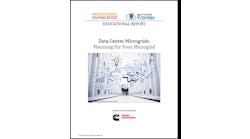Microgrid developers often cite interconnection to the grid as one of the biggest challenges to getting more projects online.
For example, in spring 2020, microgrid developers told the California Public Utilities Commission that they can build microgrids quickly — especially to help address shutoffs because of wildfires — but delays in interconnection and red tape slow the process.
“There are simple modularized microgrids that are ready for deployment … with regulatory attention and aid, these microgrids could be deployed in a much more time efficient and cost-effective manner at a much larger scale,” Scale Microgrid said in comments filed with the commission.
In fact, in states where utilities have long interconnection queues, developers could wait months for utilities to perform interconnection studies, according to Yochi Zakai, an attorney at Shute, Mihaly & Weinberger who represents the nonprofit Interstate Renewable Energy Council (IREC) in regulatory proceedings. IREC’s aim is to advance the development of renewable energy.
After the interconnection studies are complete, developers are often asked to pay for the costs of upgrading distribution systems to accommodate distributed energy resources (DERs), such as microgrids.
Fast-Track Projects with HCA?
But a new report from IREC identifies decisions that regulators and utilities can make when developing hosting capacity analyses (HCA) — decisions that allow for faster deployment of DERs. The analyses help developers find locations for projects that won’t require lengthy interconnection studies.
HCAs analyze the ability of the distribution grid to support new DERs, often without the need for time-consuming interconnection studies or costly distribution grid upgrades. They provide transparency into the state of the distribution grid. There’s a disconnect in the amount of data available to utilities compared to the data available to customers who are siting and designing DERs, said Zakai.
The grid transparency tool allows microgrid and DER developers to look at different locations on the grid and determine which feeders or parts of feeders are well suited to the new projects — and which ones aren’t ready.
Microgrid developers, like those developing single DERs, will need to go through an interconnection process and understand the options and constraints at their point of interconnection, said Sky Stanfield, a partner at Shute, Mihaly & Weinberger who also represents IREC in regulatory proceedings.
For microgrid developers working in states that have no microgrid tariffs, the report is still valuable because the HCA tool identifies constraints on the grid that can slow the progress of a project. The HCA can guide customers to locations that can support additional generation without creating a negative impact on the grid, said Zakai.
“Sophisticated HCAs can provide important information about the seasonal and time of day constraints that can be taken into account when designing a microgrid (at least in theory),” said Stanfield in an email.
States adopting HCA tools
In many states, regulators are creating rules that require utilities to create HCAs to help integrate the development of renewable energy. The regulators often establish a process for utilities to create the HCAs, requiring the input of stakeholders, rather than having utilities develop it themselves.
The report said that it’s important for regulators to consider whether and how stakeholders are involved.
“We found that when regulators and stakeholders don’t know the key decisions that need to be made, utilities are able to make the decision without soliciting feedback from stakeholders and regulators. Sometimes that results in a useful tool, but most often, if the utility is making all the decisions without a stakeholder process, the result is a less useful tool,” said Zakai.
More and more states are using HCAs to help them integrate DERs into the grid.
How California uses the tool
For example, California uses HCAs to determine available hosting capacity and fast-track projects, avoiding costly interconnection studies and utility system upgrades.
“If an HCA map shows 2 MW of available hosting capacity on a feeder, a customer can be certain a project that generates 2 MW at that location will be able to pass the fast-track screen. That’s a big deal; it’s a major win that IREC was key to bringing about in California,” said Zakai.
Dominion Energy also has implemented an HCA. “This interactive tool helps optimize solar projects in Virginia and North Carolina by providing guidance to customers about which parts of the Dominion Energy electric distribution system may be more suitable to site new clean energy installations,” the company says on its hosting capacity tool page.
The company’s map shows the grid’s hosting capacity and can help guide customers and developers on where to place installations, which saves time and money, the company said.
“By indicating the amount of resources that can potentially be connected, the tool helps ensure safety and reliability as Dominion Energy focuses on limiting voltage and thermal issues.” The company noted that the analysis will evolve as more intelligent grid devices and smart meters are installed, allowing for more grid information. The company’s map at this time mostly benefits large-scale solar customers and developers.
Where utility HCAs goes wrong
IREC’s report concludes that many utilities’ data validation processes don’t yield data that’s accurate enough to support power flow simulations used in HCAs.
“Accordingly, regulators can provide transparency into the data validation process by reviewing and requiring improvements to data validation plans,” said the report. Regulators could require utilities to submit a draft data validation plan, then solicit feedback from stakeholders on the draft as well as require utilities to submit an improved data validation plan and report periodically on the plan’s implementation, the report said.
An important message from the report: HCAs can help microgrid and DER developers gain access to information that allows them to save time and money and move their projects forward more quickly.
Track news about microgrid interconnection issues. Subscribe to the free Microgrid Knowledge Newsletter.








